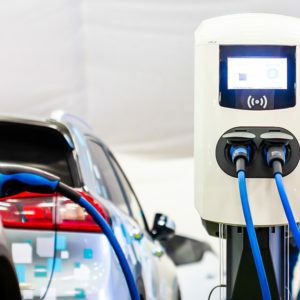The Environmental Protection Agency has proposed tailpipe emission regulations for new cars, making it more difficult for Americans to buy gas-powered vehicles. The rule is part of an effort to transform how we live our daily lives, from how we get around town to what appliances we use in our kitchen, ostensibly to address climate change.
The agency has stated that the rule could mean as much as 67 percent of all new cars sold in the country will be electric vehicles by 2032. To provide some context, despite receiving massive subsidies, EVs accounted for just 5.8 percent of all new vehicle sales in 2022. Less than 1 percent of all registered vehicles in 2021 were EVs.
But through policies such as the EPA tailpipe rule and massive spending to entice EV production and purchase, the federal government is trying to fundamentally change the vehicle fleet, regardless of what consumers want. The end goal is to get rid of gas-powered vehicles, following in the footsteps of California, which is banning the sale of new gas-powered vehicles by 2035. In addition to this severe restriction on consumer choice, there are other significant problems with the proposed rule.
EVs are pricey and dicey. They cost about $18,000 more than gas-powered vehicles and are financially out of reach for many Americans. Also, they have quality issues, such as long charging times, limited range and difficulty handling cold weather.
There are also national security implications. This government-driven shift toward EVs would increase reliance on China because of the minerals needed to produce these vehicles. According to the International Energy Agency, “China’s share of refining is around 35 percent for nickel, 50-70 percent for lithium and cobalt, and nearly 90 percent for rare earth elements.”
For all that upheaval, the alleged reductions in greenhouse gas emissions are questionable. There are more greenhouse gas emissions from producing an EV than a gas-powered vehicle, which means it could take several years of driving an EV before offsetting these emissions. And if the battery needs to be replaced, which is a distinct possibility, then achieving greenhouse gas benefits would be unlikely.
There’s a common theme throughout the administration: climate policies take priority over everything else. If the proposed rule curtails the freedom of individuals, so be it. If it means higher car prices, then that’s a cost the administration apparently thinks Americans should have to pay to achieve this ideological agenda.
Meanwhile, the administration tries to minimize the harm caused by high gas prices, which are still about 50 percent higher than when President Biden took office. Transportation Secretary Pete Buttigieg touted those expensive EVs as a solution to high gas prices.
For all the administration’s efforts, the fact remains that Congress never passed a law to use regulation to reduce the availability of gas-powered vehicles. It’s an end-run around the lawmaking process. That, too, is why legislators should end this rule, such as through the Congressional Review Act or the appropriations process. Climate change shouldn’t be used as an excuse to assert such sweeping power over our lives. At the very least, our elected representatives in Congress should make such big decisions, not federal bureaucrats.


